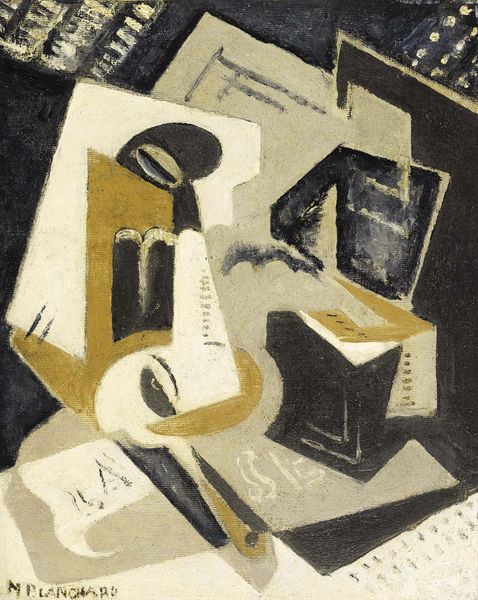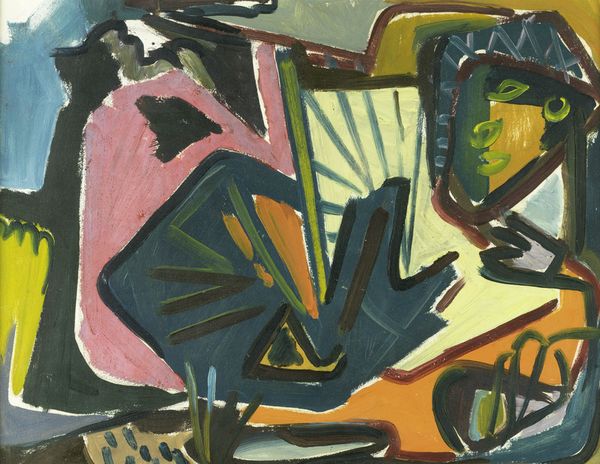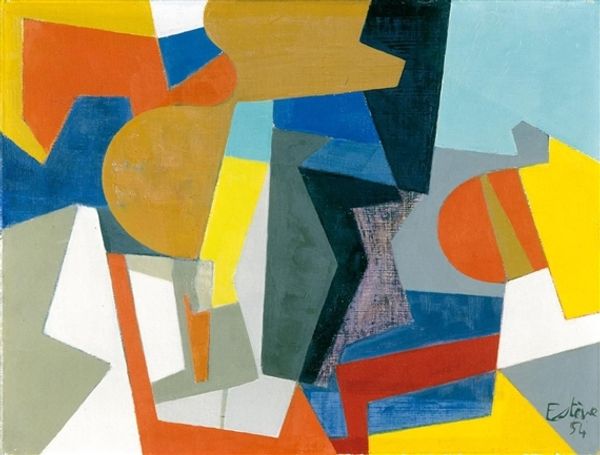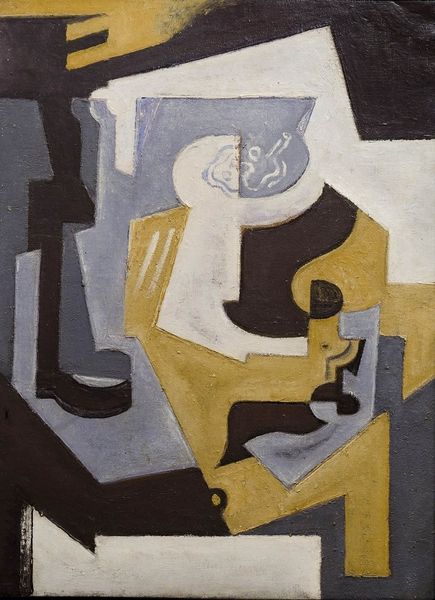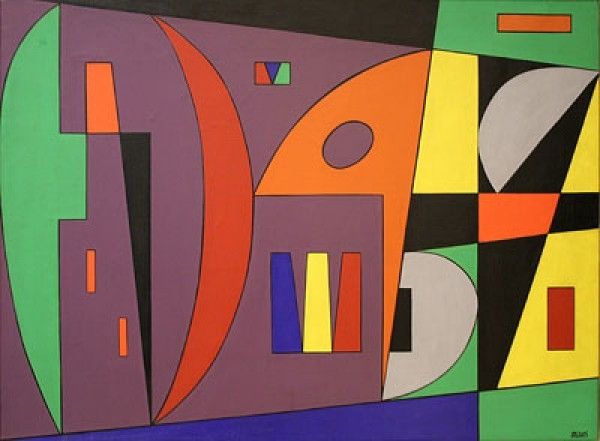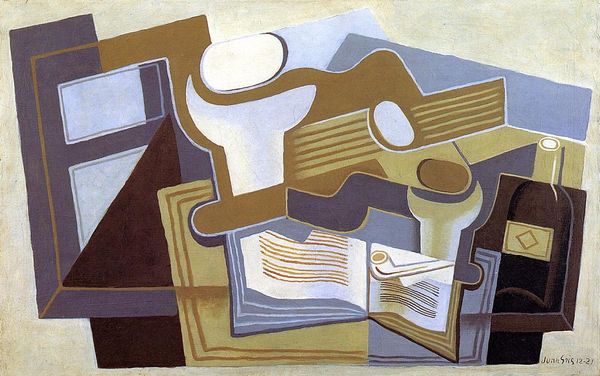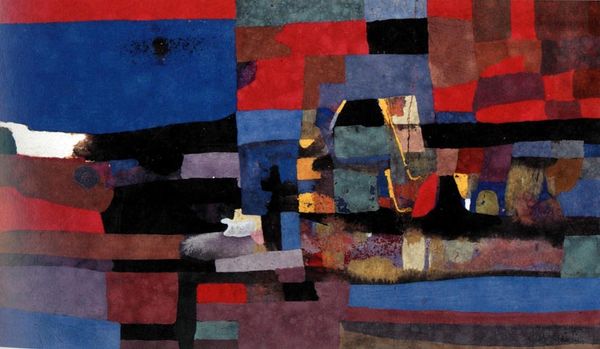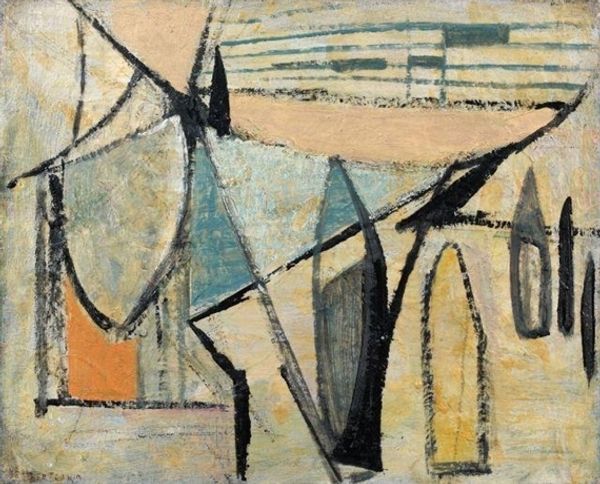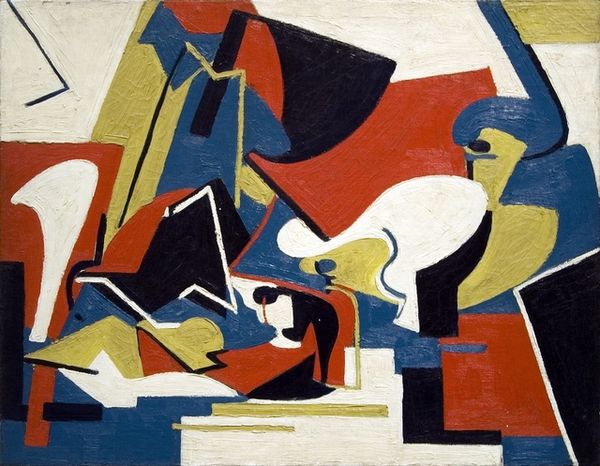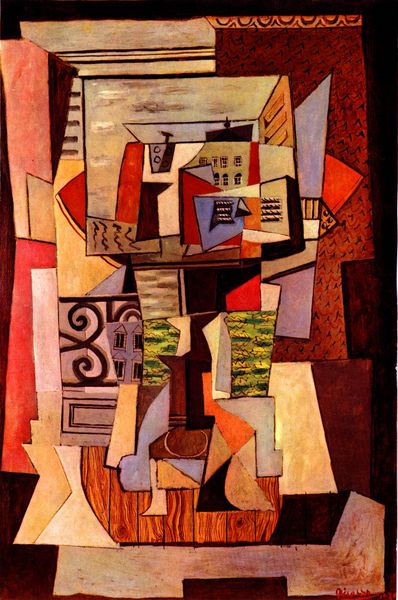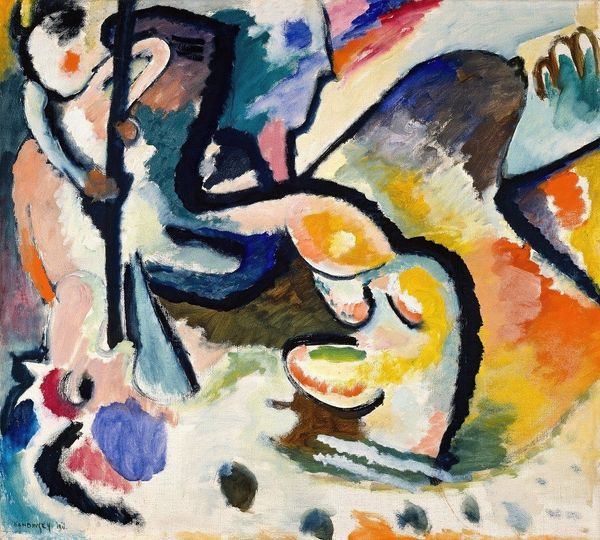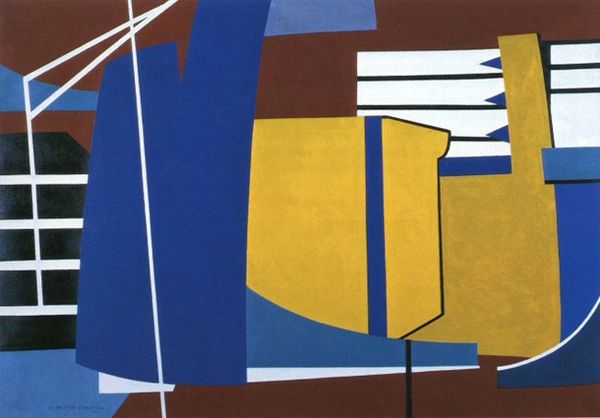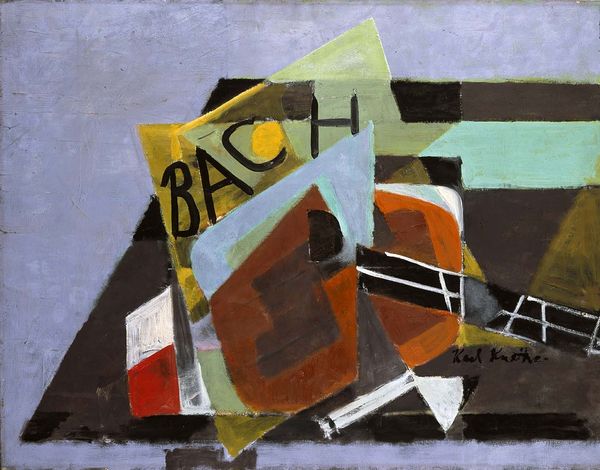
painting, oil-paint
#
cubism
#
painting
#
graffiti art
#
oil-paint
#
street art
#
mural art
#
abstraction
#
modernism
Copyright: Public domain US
Editor: Here we have an Untitled oil painting by Pablo Picasso, created around 1920. Looking at it, I’m immediately struck by how fragmented everything seems. It’s like looking at a puzzle that's been intentionally scrambled. What do you see in this piece? How do you interpret its composition? Curator: The beauty lies precisely in that fragmentation. We must analyze the relationship between the forms, the use of line, the interplay of color. Consider how the overlapping planes challenge traditional perspective. What structural relationships do you observe between the geometric shapes? Editor: I see overlapping planes of ochre and brown with what appear to be suggestions of objects. The starkness of the dark pigment in the large circular form contrasts strongly against the paler areas... What about the lines? Do you read them as outlines? Curator: Precisely. The lines operate independently, sometimes defining forms, sometimes existing as pure abstract elements. Consider how this independent existence of line contributes to a sense of spatial ambiguity. Are we looking at objects in space, or simply the essence of their forms translated into visual signs? And note, this play with spatial ambiguity, challenging the stability of representation, is at the core of Cubist innovation. Editor: That makes a lot of sense. So instead of seeing a still life that is simply an arrangement of objects, we see something almost more like a collection of the *ideas* of those objects? It’s about pure structure, the basic visual language? Curator: Precisely. We are moving beyond mimesis toward a new visual syntax. Understanding the artist's construction, their visual grammar so to speak, permits us to appreciate their re-thinking of art's intrinsic purpose. The key, always, lies within the structural dynamics present on the canvas itself. Editor: I’m starting to see it. Thanks, that was very illuminating; it's been beneficial looking through a purely formalist lens. Curator: Indeed, by deconstructing the elements of artistic form, we uncover the foundation of the artist's intentions. A valuable skill indeed.
Comments
No comments
Be the first to comment and join the conversation on the ultimate creative platform.
